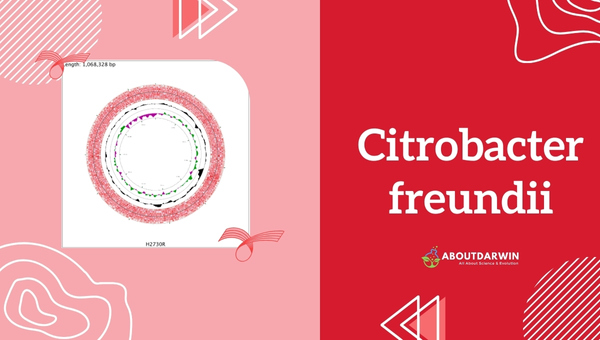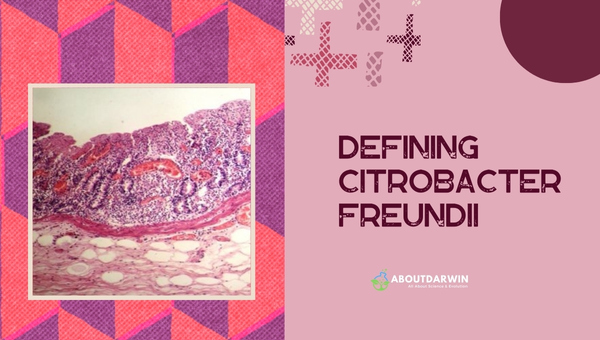Physical Address
304 North Cardinal St.
Dorchester Center, MA 02124
In the expansive field of biochemistry and microbiology, Citrobacter Freundii is a bacterium that has been piquing my interest lately. Known for its complex characteristics and pivotal role in various health conditions, understanding this organism’s behavior can lead to significant scientific discoveries.
Particularly, it’s intriguing how biochemical tests play an instrumental part in C. freundii’s detection and identification. In fact, these scientific procedures offer a fascinating glimpse into the invisible world of microorganisms that co-exist with us.
Let’s delve deeper into the mysterious world of Citrobacter Freundii, exploring its nature and learning how science uncovers such unseen aspects of our ecosystem.
Contents
What follows below is a little treat for all lab-lovers out there: A markdown table that breaks down different identifying characteristics of C.freundii based on various biochemical tests and properties:

| Basic Characteristics | Properties (Citrobacter Freundii) |
|---|---|
| Gas from glucose | Positive (+ve) |
| Shape | Rods |
| Gelatin Hydrolysis | Negative (-ve) |
| MR (Methyl Red) | Positive (+ve) |
| Catalase | Positive (+ve) |
| Pigment | Negative (-ve) |
| Motility | Positive (+ve) |
| Indole | Negative (-ve) |
| Urease | Variable |
| OF (Oxidative-Fermentative) | Facultative Anaerobes |
| Nitrate Reduction | Positive (+ve) |
| VP (Voges Proskauer) | Negative (-ve) |
| H2S | Positive (+ve) |
| Capsule | Negative (-ve) |
| Catalase | Positive (+ve) |
| Gelatin Hydrolysis | Negative (-ve) |
| Spore | Negative (-ve) |
| Oxidase | Negative (-ve) |
| Gram Staining | Negative (-ve) |
| Growth in KCN | Positive (+ve) |
| Citrate | Positive (+ve) |
| Flagella | Positive (+ve) |
| MR (Methyl Red) | Positive (+ve) |
First, let’s acquaint ourselves with the character at the center of our discussion: Citrobacter Freundii. It’s a fascinating bacterium found in both the environment and within living organisms. From sewage and soil to the gut of a human being or other mammals – this perplexing microbe has made itself quite at home.

Citrobacter Freundii is Gram-negative – meaning it approaches life with a unique bacterial blueprint that sets it apart from its Gram-positive counterparts. Wrapped within its somewhat complex cell wall lies an assortment of proteins, lipids, sugars, and all sorts involving feats of biochemical brilliance that would make any biochemist nod in appreciative understanding.
Health-wise, though, Citrobacter Freundii can be more of a foe than a friend to humans. Notably identified as an opportunistic pathogen – pretty much hanging around till it spots an opportunity to wreak some havoc.
C. freundii is known to cause various types of infections like urinary tract infections (UTIs) or bloodstream infections, particularly among those with compromised immune systems.
Also Read: Exploring Differences: Gram Positive vs Gram Negative Bacteria
Here are some key characteristics and behaviors of Citrobacter Freundii to consider:
If you’ve got your lab coat ready, here are some tests commonly performed when trying to spot this sneaky bacterium:
This test helps distinguish those bacteria that produce an enzyme called oxidase from those that do not. C. freundii falls into the latter category and shows a negative result.
The principle behind this test lies in critiquing whether or not our suspect (i.e., any present bacteria) can use citrate as its sole carbon source while producing ammonia simultaneously that alkalizes the environment – thus changing color on the indicator current in agar medium! C. freundii uses citrate, hence giving positive results.
Here’s where we test for indole production from tryptophan − but rest easy; C.freundii doesn’t! Thus, the given result is negative.
In this particular bio-act performance, if urea gets converted into ammonia and carbon dioxide by bacterial urease enzyme action − voila! Immediate alkalinization! But with C.freundii, we get a negative result.
These tests offer the unique combination of immunology and microbiology necessary for accurate identification. Now, isn’t that something?
Also Read: Streptococcus Canis: Biochemical Test & Identification
| Advantages of Modern Methods | Limitations of Modern Methods |
|---|---|
| Faster Results: Modern techniques like PCR often provide results in just a few hours. This is much faster than traditional biochemical tests, which can take days. | Complex Infrastructure Requirements: Molecular techniques require sophisticated equipment and trained personnel, which might not be available, especially in remote or poorly resourced settings. |
| Specific and Sensitive: Techniques such as sequencing allow for precise identification at the species level, even if the bacteria are present in low quantities. | Less Affected by Environmental Factors or Growth Conditions: Unlike biochemical tests that rely on growth characteristics that can vary based on multiple factors, molecular methods give consistent results. |
| Less Affected by environmental factors or Growth Conditions: Unlike biochemical tests that rely on growth characteristics that can vary based on multiple factors, molecular methods give consistent results. | Interpretation Challenges: The data generated from these advanced techniques requires specialized software and training for meaningful interpretation. |
The classical biochemical differentiation between Salmonella and Citrobacter Freundii is based on the KCN test and the lysine decarboxylation test.
The genus is subdivided into two species: (1) Citrobacter Freundii (includes mostly H2S-positive, indole-negative, and adonitol-negative cultures) and (2) Citrobacter diversus (composed of H2S-negative, indole-positive, and adonitol-positive cultures).
The only way to diagnose a Citrobacter Freundii infection is through a culture test. Citrobacter Freundii ferment glucose, produce gas, and consume citrate. Most of them are motile.
Also Read: Shared DNA: How Much DNA Do We Share With Family Members?
As we near the end of this discussion, it becomes clear why the biochemical test and identification of Citrobacter Freundii hold an important place in microbiology. Their ability to adapt to both anaerobic and aerobic environments makes them a noteworthy subject, lending significance to their comprehensive understanding.
Moreover, continued research and development into biochemical tests once again underline our resilience in combating infections. In a world where such opportunistic pathogens like C.freundii reside quietly, waiting for their moment of attack, these tests give us the advantage.
They tip us off about the culprit behind an infection, enabling targeted response – whether it’s medical treatment or making amends with our environment. It truly is an intricate mix of biochemistry and detective work!